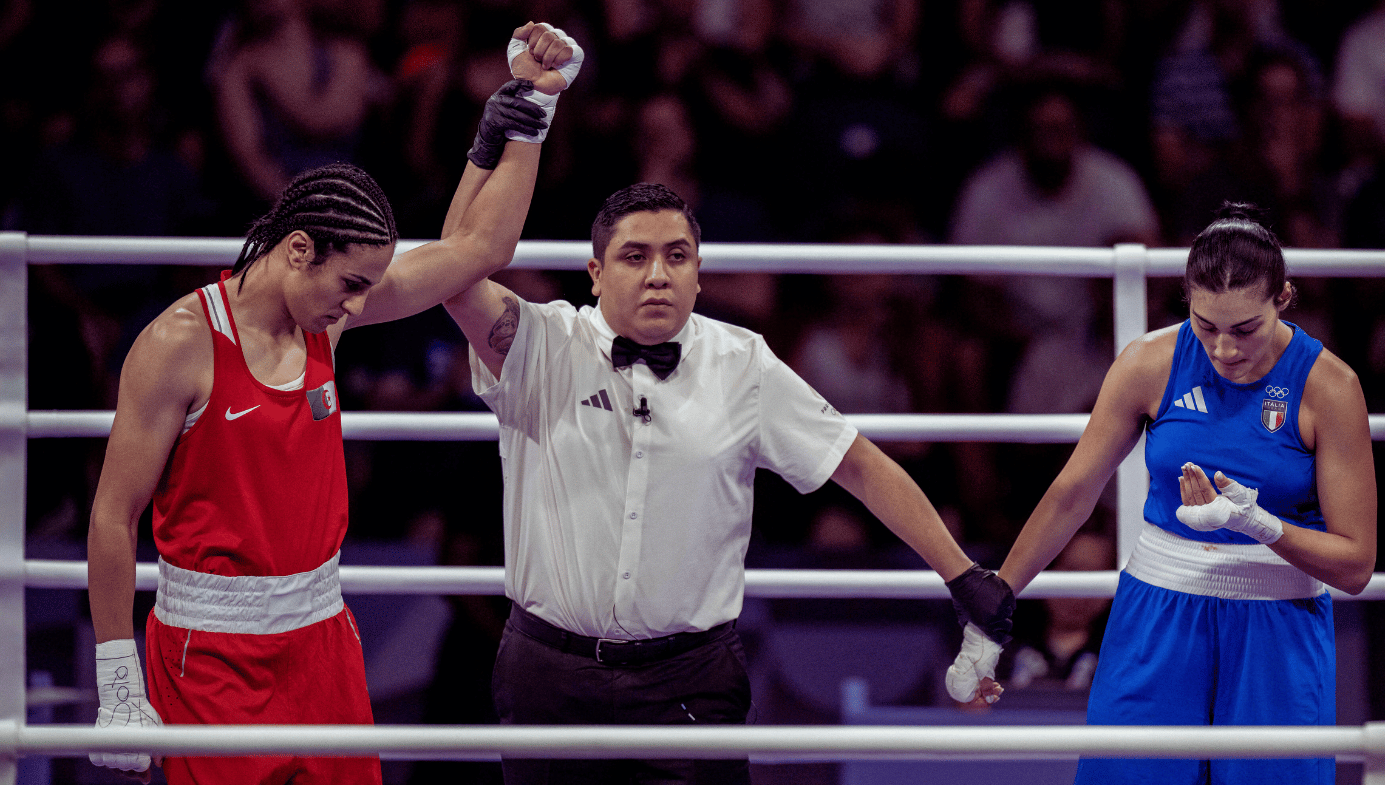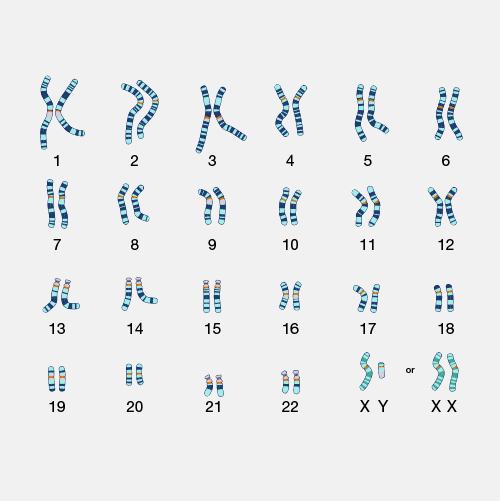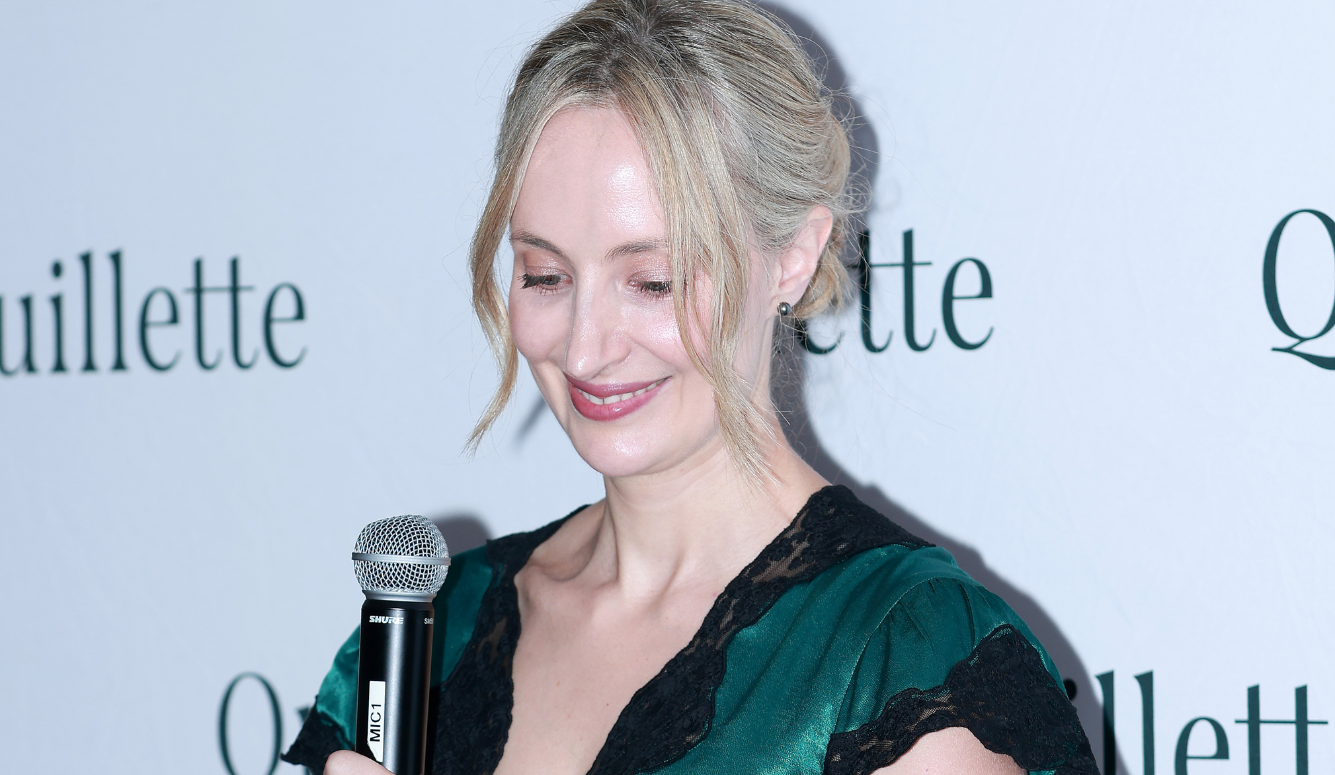Podcast
Podcast #247: Should Imane Khelif Be Allowed to Box Against Women?
Quillette podcast host Jonathan Kay speaks with biologist Emma Hilton about the controversy surrounding a champion women’s boxer whom critics accuse of being biologically male.

[00:00] Jonathan Kay: Welcome to the Quillette podcast. I’m your host, Jonathan Kay, a senior editor at Quillette. Quillette is where free thought lives. We are an independent, grassroots platform for heterodox ideas and fearless commentary. If you’d like to support the podcast, you can do so by going to Quillette.com and becoming a paid subscriber. This subscription will also give you access to all our articles and early access to Quillette social events.

Today’s guest is Dr Emma Hilton, a developmental biologist who will be talking to me about Imane Khelif, the Algerian athlete who recently won the gold medal in the women’s welterweight event at the 2024 Summer Olympics in Paris.
[00:45] As many listeners will know, Khelif has been accused of being biologically male. There are indications that Khelif may have been born with a disorder of sexual development (DSD), whereby a genetically male individual exhibits outward characteristics which are more closely associated with female physiology. If true, this would make Khelif’s case similar to that of famed South African middle-distance runner Caster Semenya, whose case has been extensively litigated before world sporting tribunals. Dr Emma Hilton spoke to me from England, where she serves as a research fellow in the University of Manchester’s School of Biological Sciences.

[01:18] Emma, thank you so much for joining the Quillette podcast. I appreciate you taking the time.
[01:32] Emma Hilton: You’re welcome. It’s lovely to join you here.
[01:34] Jonathan Kay: So I guess the most obvious formulation of this inquiry on my part is: For biological purposes, is this person a man or a woman?
[01:43] Emma Hilton: So, we’re talking about sex: What sex is this person? We’re talking about an Olympic boxer who has now won a gold medal in the female category. Khelif’s passport says female by all accounts, and that’s what the International Olympic Committee (IOC) has used to approve Khelif’s eligibility into the female category. But there’s some very real concerns, some strands of information that can be put together, which show that Khelif is probably a male with a DSD. That’s a difference in sex development. It’s an umbrella group of genetic disorders.

[02:24] And what this means is that someone can perhaps appear to look female when they’re born, but actually all of their internal biology can be male. And that’s obviously relevant for sports, particularly in something like boxing, which presents huge safety concerns.
[02:43] Jonathan Kay: When people talk about DSDs, disorders in sex development, is that the same as what some people refer to as “intersex” conditions?
[02:54] Emma Hilton: Yes, so historically they’ve been referred to as intersex. That language has fallen out of favour, however. People felt it was stigmatising.
[03:04] You know, we’re talking about an unusual group of genetic disorders that, perhaps unlike other genetic disorders, have cultural significance for the people who have them. And so the language has changed, and it is tricky in the medical literature. It’s very common, I think, to see “disorders of sex development” when we’re talking about medical conditions. But in patient-facing language, “differences of sex development” [is used].
[03:29] Jonathan Kay: This person’s family and this person’s doctor, in good faith, thought this person was female upon their birth and childhood. At what point in life does it typically manifest that a person such as this has a DSD, [meaning] they might not, strictly speaking, be female or male according to how they were thought of when they were born?
[03:50] Emma Hilton: So if we think about, more broadly, first development and how a boy develops in the womb… what we’re thinking about then is a well-established pathway from XY chromosomes to the development of testes… testicles. Those testes make a huge amount of hormones and that directs the wider anatomy that we associate with baby boys; so all the internal plumbing that you think about with boys—and also growing a penis.
[04:23] And what we know, for example, about Semenya is that it’s a disorder that means you can’t grow a penis properly. So at birth, the boy might look a bit like a girl—what we’re [typically] talking about when a midwife looks at the external genitals and says, “It’s a girl.” So, that’s the basis of these kinds of disorders.
[04:47] So now we’ve got someone who looks a bit like a girl, but has all this internal male biology. And with this particular disorder, which I think is very likely to be the one that Khelif has, [at] puberty, what you have is huge amounts of testosterone, just like any other boy.
[05:05] And they tend to experience a bit of a [developmental male] catch-up; so what didn’t grow as a boy in the womb starts to catch up [later in life]. And there will be some obvious physical changes associated with that—not just in terms of perhaps noticing changes in external genitals. But also, obviously what we’re talking about here is all of those male muscles and all of those things that interact with testosterone to make a male body—which makes a male a better athlete.
[05:36] Jonathan Kay: So I know that you’ve studied performance differences between biological males and females. In rough back-of-the-envelope terms, how would those differences manifest in boxing, in terms of the speed and power of a boxer?
[05:50] Emma Hilton: Boxing is obviously a very athletic sport, and we’re talking a lot about strength and power here, particularly through the upper body.
[05:59] So when we think about average male/female differences, and this is how we categorise average differences between the two sexes, we’re thinking about those wide shoulders, the longer arms, the ability to move through your core, on your hips, planting your feet. And so in terms of punch power, if you measure this kind of movement in a lab, males can do that with two and a half times more force than females.
And that’s obviously relevant for boxing, where they’re doing an awful lot of these kinds of movements. And importantly, in boxing, the point of those kinds of movements is to cause an injury. We’re not talking about a sport where you might get elbowed in the head and that’s a foul and it’s not part of play.
[06:45] We’re talking about a sport that’s designed to be won most efficiently by causing brain injury—in terms of a knockout. And we also know it’s a sport where even with all of the safety initiatives that various boxing councils have brought in, people die. People die because they’re being punched in the head as hard as their opponent can [punch].
[07:08] And so not only is the [male-female] physical differential massive in a sport such as boxing, which relies so heavily on this upper-body shoulder punch force. But also the outcomes of that strength differential are way more serious than in many other sports. For example, Semenya in the 800 metres, we don’t really have to consider…
[07:31] Jonathan Kay: It’s not a safety issue [in Semenya’s case].
[07:33] Emma Hilton: It’s not a safety issue.
[07:34] Jonathan Kay: It’s a fairness issue.
[07:36] Emma Hilton: Yes, and obviously it’s a fairness issue in boxing as well, but the outcome of the unfairness is actually quite dangerous.
[07:42] Jonathan Kay: Semenya endured extensive testing, and there’s been all sorts of litigation about it. To some extent, her condition became an open book. In the case of Khelif, [on the other hand], a lot of this is just speculation. Do we have any data about how hard Khelif punches versus other boxers in the female category?
[08:02] Emma Hilton: I certainly don’t have that data, and I don’t know if anyone has collected that kind of athlete-specific data [regarding athletes with DSDs]. But [sports sex] categories don’t rely on how fast can you run or how hard can you punch. Those categories rely on where those abilities come from. And in the case of the male/female [distinction], some of that ability comes from the simple fact that you have male biology. Even if [your] output is broadly in line with a female athlete, at least some of it has been gained simply by being [male].
[08:41] So I don’t know how hard Khelif punches. I know that if you consider stories that are coming out, how coaches have flagged [Khelif] in terms of sparring and training, they certainly felt that Khelif’s performance was way beyond that of a typical female boxer. We’ve seen some horrific images of the results of females sparring with Khelif, to the point where I think coaches have stopped their female athletes sparring with Khelif because they felt that was dangerous.

[09:20] Jonathan Kay: If memory serves, there was a Spanish coach who barred athletes from practising against Khelif for the reasons you described…
[09:29] Emma Hilton: So there certainly is some evidence on the ground from the people who are around Khelif, who are sparring with Khelif… the punches they were subject to were atypical, were certainly not what they were used to in a female boxer.
[11:13] Jonathan Kay: One of the subplots here is that the body that had been charged with regulating who gets to fight as a female and who doesn’t—the IBA…for various reasons, including reasons that have nothing to do with this case, [the IBA] sounds kind of sketchy. Have you been following that part of the drama?
[11:39] I think the IBA put on a press conference. They said [Khelif] is a boxer whom they excluded, but they were vague about what criteria they used. As a scientist, if you were charged with determining whether Boxer X was properly classified as male or female, what steps would you take?
[11:57] Emma Hilton: The issues around why the IBA [wasn’t] running the [boxing] competition [at the Paris Olympics], and why [it was instead] being run by an International Olympic Committee [ad hoc group]… I don’t really have any great insight into corruption in boxing, although I’m happy to believe it’s fairly rife.
[12:10] But what the IBA has said it has done makes perfect sense [in the context of] all the other strands of information that are coming together. What they’ve said is that they tested Khelif’s karyotype. So what they’ve done there is look to see whether Khelif has XX or XY chromosomes. We know that XX would be associated usually with the female sex. And the XY would be associated with the male sex.

[12:33] So they’ve sent these tests off to labs that they named, which are accredited labs that work with different sporting agencies to run their samples. And what they’ve said has come back from [those tests] is the fact that Khelif has a male karyotype. Now, part of the confusion is contrived, I think, because obviously a sports federation isn’t going to release the private medical results of an athlete, especially without the athlete’s consent, which I believe wasn’t given. And indeed there were apparently some letters coming from Algeria to say, you will not release this private medical data. Now I support that. You can’t just publicise someone’s private medical data.
[13:22] What the IBA did was say, the category is XX… the female category is XX. These athletes aren’t eligible for that category. They have a male karyotype. And they literally said, you need to read between the lines. And it’s easy for me, as a developmental biologist, to read between those lines. But people have clung to [this nominal ambiguity] as some kind of [real] uncertainty.
[13:47] And that [uncertainty] may have been [important] at [one] time. I don’t think it was, but let’s grant that there [once] was still some uncertainty. What we’re seeing coming through [now], from various people who have been involved with Khelif’s training programs—there’s reports of what happened when Khelif saw an endocrinologist.
[14:05] Not only are the people [who defend Khelif competing as a woman] going to have to say that the IBA are lying, but they’re also going to have to start saying that academics at French universities are lying and that endocrinologists are lying. Every strand of information is incomplete, but [they all] create a coherent story.
[14:23] There isn’t anything contradictory [in the evidence] other than the [general] claim that Khelif is “a woman.” And I think we can all understand why that claim is persisting, and certainly to some extent why that claim might be a kind thing to say to [or about] Khelif.
[14:39] Jonathan Kay: The word you used is “kind,” and I guess I agree with your use of it, because in this sense, the story is very similar to that of Semenya. If you have a person who’s been told throughout their childhood that they are truly female, and it [still] says “female” on their passport, and it says “female” on their birth certificate, I don’t blame them for showing up at the Olympics and saying—regardless of the changes that have happened to their bodies since adolescence—“I’m classified in my society [as a woman].”
[15:10] And Algerian society is not exactly an LGBT funhouse. It’s a conservative society where one would expect little deference to born-in-the-wrong-body/pronoun-police type stuff. So it’s extremely easy to be sympathetic. How do we balance that? Is there any way to manage these situations in a way that respects the dignity of the athlete while also respecting the reality of biology?
[15:45] Emma Hilton: We’re now thinking about two separate [issues] and that’s what needs to be considered moving forward.
[15:50] And I think there is quite a clear path forward, and I’ll describe it in a moment. But I’ve worked around genetic disorders all my research career. I’ve delivered information to clinical people who are then going to have to tell patients something that is undeniably causing trauma for them. And so I have a lot of sympathy.
[16:11] I don’t want to be uncharitable here. Khelif was observed to have female external genitals. When Khelif was born, [Khelif] genuinely [self-conceived as female] during childhood. And yes, it must be traumatic then at puberty to see your body going through changes that you’re not expecting. And as you say, in Algeria, [it’s] not just issues around LGB rights and gender identity, but also [issues] around medical conditions that deal with sex… DSDs are not going to be [easily] accepted. What we can think about moving forward is: How do we prevent this in the future? And we need to think about preserving not just the duty of care to Khelif as someone with a medical condition, and the kind of ethics that we need to have around that, but also we need to protect female boxers from the potential harm of someone who is male stepping into the ring with them. And so the answer to that I think is: Khelif’s testing should have been done much earlier. As a matter of course, all female athletes… rather, athletes who are saying they’re female, believing themselves to be female, who want to enter the female category in any sport, you do a screen for your sex.
Khelif’s testing should have been done much earlier. Going forward, as a matter of course, all athletes who want to enter the female category in any sport should first be required to go through a sex-screening procedure.
[17:40] And that may be when some girls are 13, 14, 17, 18, whatever. But you do it early; you do it before they’re in the media spotlight, and you do it before they bring unfairness and, in this case, potential safety risks to female athletes.
[17:55] Jonathan Kay: In the blink of an eye, we developed a test you could use at home to determine if you have COVID, and we were all sticking things in our noses and ears and whatnot.
[18:04] Does that technology exist for determining your chromosomes in terms of whether you’re biologically male or female?
[18:11] Emma Hilton: Yes, and we’re not even talking about something that’s as invasive as putting those swabs right down into the back of your throat. We’re talking about what would be called a cheek swab.
[18:21] So effectively a cotton [ball] rubbed fairly firmly on the inside of your cheek. That’s going to pull some cells off your cheek. And then you can go and analyse those cells and have a look. We’re not talking about what the IOC called the bad old days of sex testing. You know, technologically, we’re light years ahead of where we were in the 60s or 70s…
[18:45] Jonathan Kay: Was that like, “Drop your pants and let’s see what’s going on?” Which, of course, is humiliating and invasive.
[18:50] Emma Hilton: Yes, although [that still] happens in anti-doping screens, where people have to pee in pots and the examiners have to check that that urine is actually coming out of the person.
[19:04] So there is, to some extent, lots of invasions of athlete privacy that they accept as a routine part of qualification for sport. In the past, we had these very humiliating “nude parades,” they were called, where someone who said “I want to be in the female category” was prodded and examined. And then in the sixties and seventies through to the nineties, people went to genetic testing, which is a really good indicator to say what’s going on in someone’s body.
[19:36] So they went to start looking at how many X chromosomes do you have, and then moving to “do you have a Y chromosome?” Over the last 30-odd years, we have had absolutely huge technological leaps in what we can do with really quite small samples. So now, with a cheek swab, we could measure the number of ‘X’s very routinely under a microscope.
[19:59] You put the cells on a microscope slide, put some dyes on them that are going to give us some signals that we can look at, look down the microscope and say, “Right, I’ve got two signals for the X chromosome, they’ve got two ‘X’s. I’ve got a signal for a gene on the Y chromosome… that’s the make-male gene. Okay, so that tells us their development is likely to be male.” I could almost design an assay [myself], a test that would look at a lot more different things, all in a one-shot [format]. And these tests are cheap, they’re easy to run. It’s the kind of testing that, if you are pregnant, and you want to know the sex of your baby, they can take a blood sample from [the mother], right? And from that, they can tell the sex.
[20:43] Jonathan Kay: So is this the future? Like, I’m a baseball fan, and when a pitcher walks off the mound in Major League Baseball, [umpires] check their glove for foreign substances. It’s just part of the game. Is this cheek-swab business the future?
[20:55] Emma Hilton: I think it has to be—though I think there’s some resistance based on the idea that we can’t do it any better than we did in the 1960s.
[21:03] Jonathan Kay: It’s a weird kind of lurid nostalgia for that, right? Because it’s sort of like [the anti-testing side] is saying, “Well, this is the same horrible thing that they did 50 years ago.”
[21:15] Emma Hilton: Yes. I think it’s a smokescreen. The IOC are harking back to that because they don’t want to run sex testing. The IOC don’t mind male biology in female sport.
[21:26] Jonathan Kay: But why is that? Because in every other context, the IOC is understandably jealous of its brand. This one issue threatens to undermine the integrity of fairness at the Olympics.
[21:38] Whichever side of it you’re on, everyone’s been talking about it, and it’s definitely sullied the public discussion about the Olympics. Instead of honouring people who win medals, people are arguing about this [boxer] who appears biologically male, subjecting females to risk, and compromising the fairness of the sport.
[21:56] Why would the IOC support policies that essentially ensure that this kind of controversy repeats itself in the future?
[22:03] Emma Hilton: I think the IOC has moved away from being an evidence-based, science-led organisation. You know, they still say that they value those things. They say that they understand that male and female athletes need to be separated so that females can succeed in sports. But what they don’t want to say is that [this process is] about actual [biological] sex. And that’s because they’ve moved away from this kind of science-led framework to… over the last five to ten years or so… they’ve moved toward a human-rights [approach].
[22:41] Now, I’m not [criticising] human rights. I think human rights are good, obviously. But [the IOC is] talking now about human rights based on gender-identity discrimination. So this now would include Khelif, who, let’s assume, has the gender identity of a woman. It also includes males who say that they’re women… trans-identified males.
[23:03] So they want that to be the sex boundary between male and female categories, and that’s just not scientific at all. That is political. I think the IOC is preserving its brand [insofar] as it sees all this as being a progressive thing to do in a world where, as they see it, sex doesn’t really exist. Sex is on a “spectrum,” all of this nonsense.
[23:26] So I think they are thinking about their brand, and this is the avenue that they’ve chosen, and they’ve done that at the expense of actual science.
[23:35] Jonathan Kay: Emma Hilton, thank you so much for being on the Quillette podcast and explaining these subjects to our listeners.
[23:39] Emma Hilton: You’re welcome. Thank you very much for having me.
[23:42] Jonathan Kay: Thank you for listening to this episode of the Quillette podcast. Quillette is where free thought lives. We are an independent grassroots platform for heterodox ideas and fearless commentary. If you’d like to support the podcast, you can do so by going to Quillette.com, and becoming a paid subscriber.








